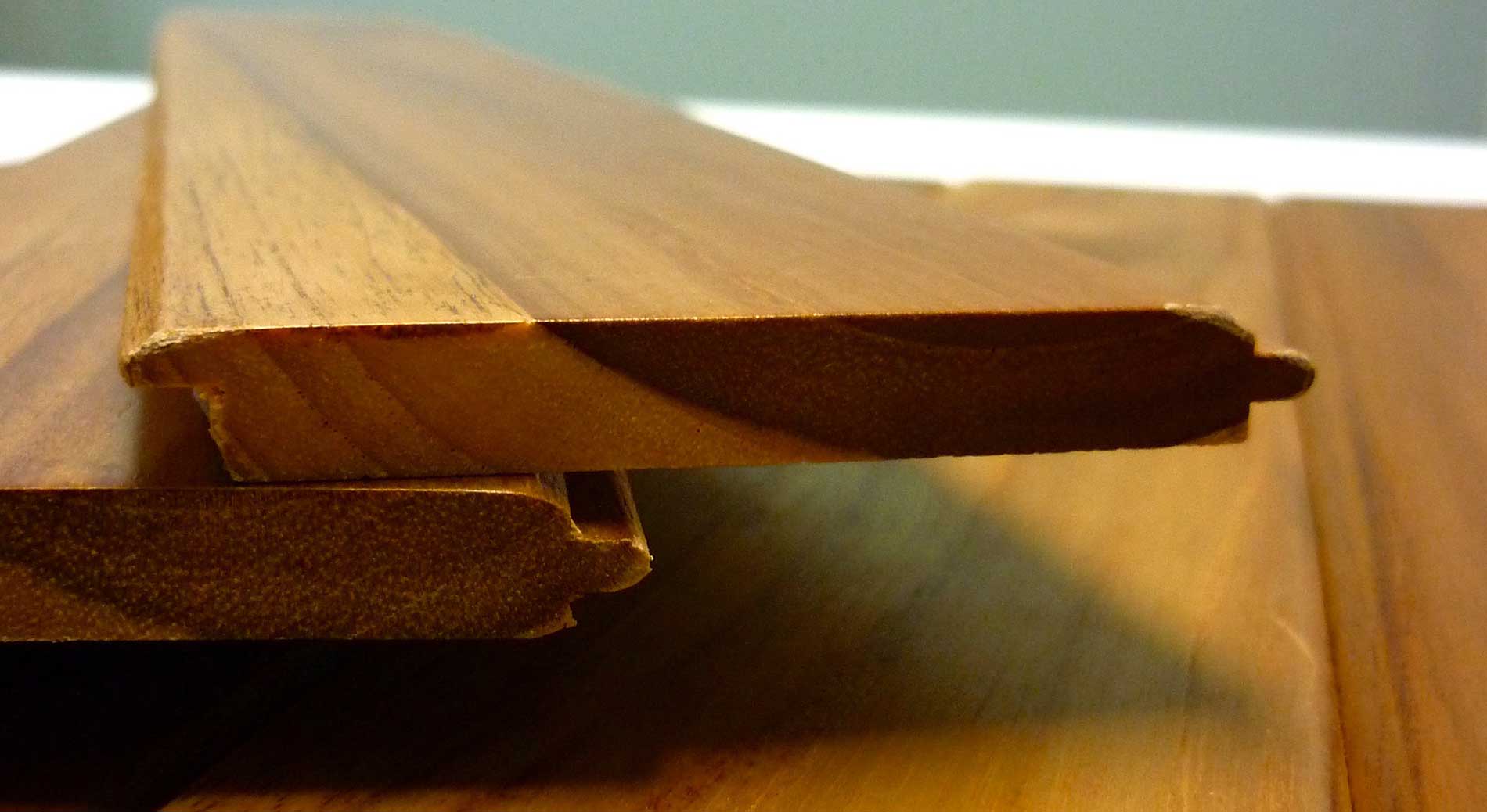The Ultimate Facts You Need to Know About Teak Paneling

Serving as a big architectural component for a vintage home design since the Victorian era, wood paneling still prevails in today's modern culture with its impressive look. Innovations in technology provide a greater variety of teak paneling options to suit differing tastes in architectural styles. Wood paneling is added as a decorative, inviting accent and/or to cover up damaged areas. Hardwood paneling is very popular in modern homes because of its dimensionally stability, hardness and elegance. Teak is an ideal choice for paneling due to its durability and resistance to water and sun.
We'll provide essential information on teak paneling to help you make an educated choice.
1. AESTHETIC PROPERTIES
Teak panels can be found in beautiful natural colors, ranging from dark golden yellow to a dark mocha after exposure. The wood emits a pleasant leathery scent when freshly cut or milled.
Teak paneling has tight grain, especially when the teak panels unfinished solid boards, which are visibly different to prefinished solid ones, and engineered wood panels. Unfinished solid teak boards are free of additional chemical/factory processes on the surface.
The elegant colors of solid teak paneling enhance your interior or exterior space, and add value to your home.
2. HIGH PERFORMANCE AND DURABILITY
Teak wood itself is regarded as a resilient wood that is used for multiple purposes, from paneling, flooring, even shipbuilding. With its Janka hardness scale measure of 1155, teak wood is comparably softer than most hardwoods, making it a comfortable choice for your wood paneling. Soft yet strong, and dimensionally stable are the characteristics that make solid teak stands out. Teak panels can withstand inclement weather, including under humid conditions or intense sunlight exposure. With high adaptability, teak paneling on ceilings, wall or exterior areas benefit your home fully and aesthetically.
Owing to its natural oil content, teak paneling is naturally water resistant in mature teak wood, due to the way natural teak oil works to fill all the micro tubes in the grain, and prevents humidity from penetrating and ruining the wood's structure. That means that mature teak wood paneling is the ideal choice when you're considering wall paneling for your kitchen, for example, and other areas where water and moisture are a consideration. Teak paneling outperforms other wood species which are more susceptible to temperature and humidity level changes.
This spectacular natural oil property makes teak panels season well in, not just indoor, but also exterior construction projects which gives homeowners and contractors a grand freedom to tailor their architecture plans.
Teak wood is highly regarded also because of its great density, which makes teak paneling naturally resistant to decay or damage. Homeowners benefit from teak's durability as it lasts for a long time, as much as a hundred years.
3. STYLES OF TEAK PANELING
3.1 Teak full-wall paneling
Teak full-wall paneling is applied to the entire wall surface, from floor to ceiling. It adds sophistication, authenticity, attractiveness, and value to your property.
As you consider the advantages of teak paneling, you will also need to choose a finish, whether you prefer a painted or a natural wood surface.
Painted teak panels offers the flexibility of colors and highlights, giving you the freedom to tailor your design ideas. If you prefer to see the wood grain, you can stain it a natural look or leave it in its natural state, which varies in colors with streaks of various shades.
Teak wood itself requires low maintenance, no preservatives or paint so applied paints on its surface might alter these original characteristics.

3.2 Teak wainscoting paneling
Wainscoting is a paneling system installed on the lower half of an interior wall. Teak performs well in wainscoting applications, particularly due to its dimensional stability factor, which serves well when glued together and applied on the structure framework.
Wainscoting offers homeowners a wide variety of design choices which can be achieved using flat panels or beadboard fashion.
4. A FEW NOTES ABOUT INSTALLATION
Traditionally wall paneling was used on kitchen walls and entryways but because of teak panels' resilience, water resistance and aesthetic appearance, they can be installed virtually anywhere in the home.
Tongue-and-groove is a highly recommended method for wood paneling, the price of which can be higher than sheet paneling, however, it's a worthy investment because the added value and attractive look will totally pay offset the investment.
Kiln-dried wood panels are proven to be a better option because the wood is heated above 130F in a kiln which means harmful elements such as insects, eggs and fungi will be wiped out.
It is advisable to reserve a small space of 1/16" extension joint between each panel in case the panels increase and decrease, this way they would not stack together. Given teak is not very susceptible to temperature changes, this is merely a precaution step. Thorough instructions of how to measure your walls and cover them with teak paneling can be found here.
Recap on important benefits of teak paneling:
1. Beautiful presentation, elegant color, tight grains, best when comes in solid unfinished, tongue-and-groove, kiln-dried planks.
2. High durability, excellent performance, long-lasting and high content of natural oils.
3. Works well with different paneling styles.
Leave Reply